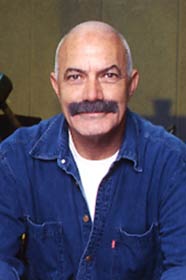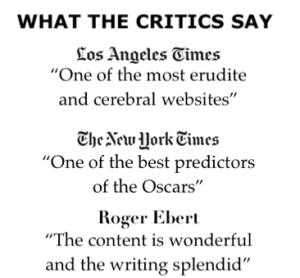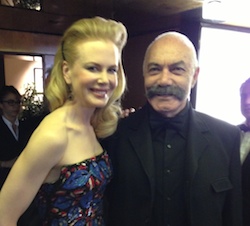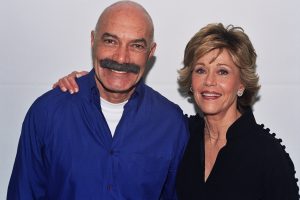Alexander Payne’s latest film, Downsizing, starring Matt Damon in one of his weakest performances, is the director’s first incoherent film, an overlong tale that tries to do too much and ultimately feels overstuffed with ideas but lacking clear identity.
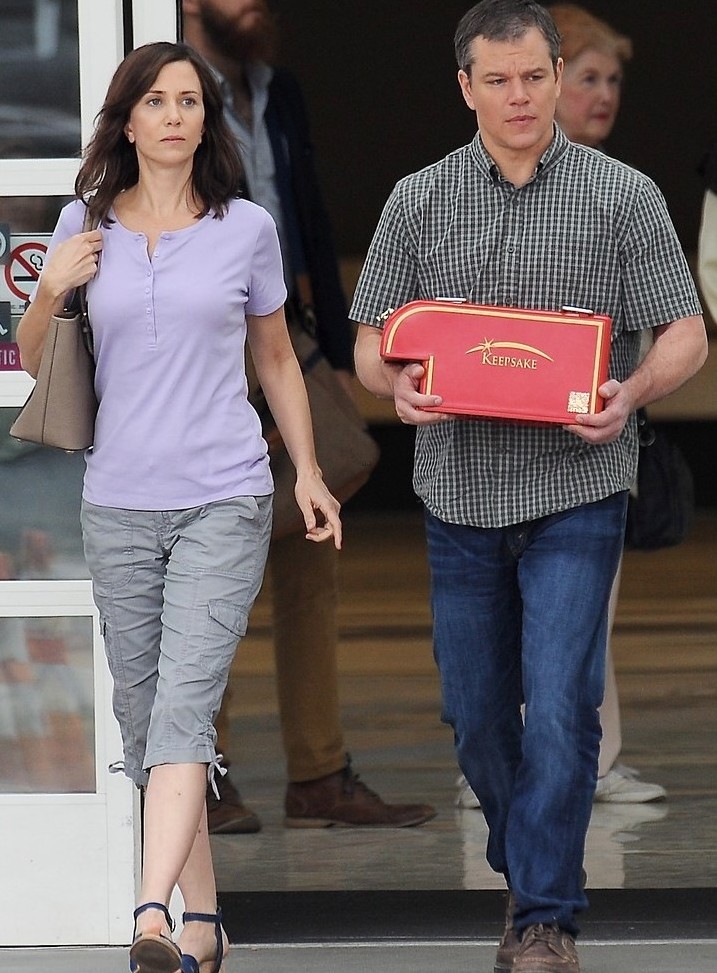
Our grade: B- (** out of *****)
Update: Readers just alerted me that Downsizing was chosen as the best picture of the year by the Hollywood Reporter’s chief critic, and as one of the year’s worst pictures by his Variety counterpart. Which goes to say that the movie is divisive and that there is no such thing as objective or impersonal or dispassionate criticism.
Film’s Origins
Giamatti, who previously teamed with the director on “Sideways,” will play a man who decides he can have a much nicer life if he undergoes a process to shrink himself. Witherspoon, whose career took off after starring in Payne’s “Election,” would play a woman Giamatti meets on his journey as a small person. Cohen would play a pint-sized foreigner.
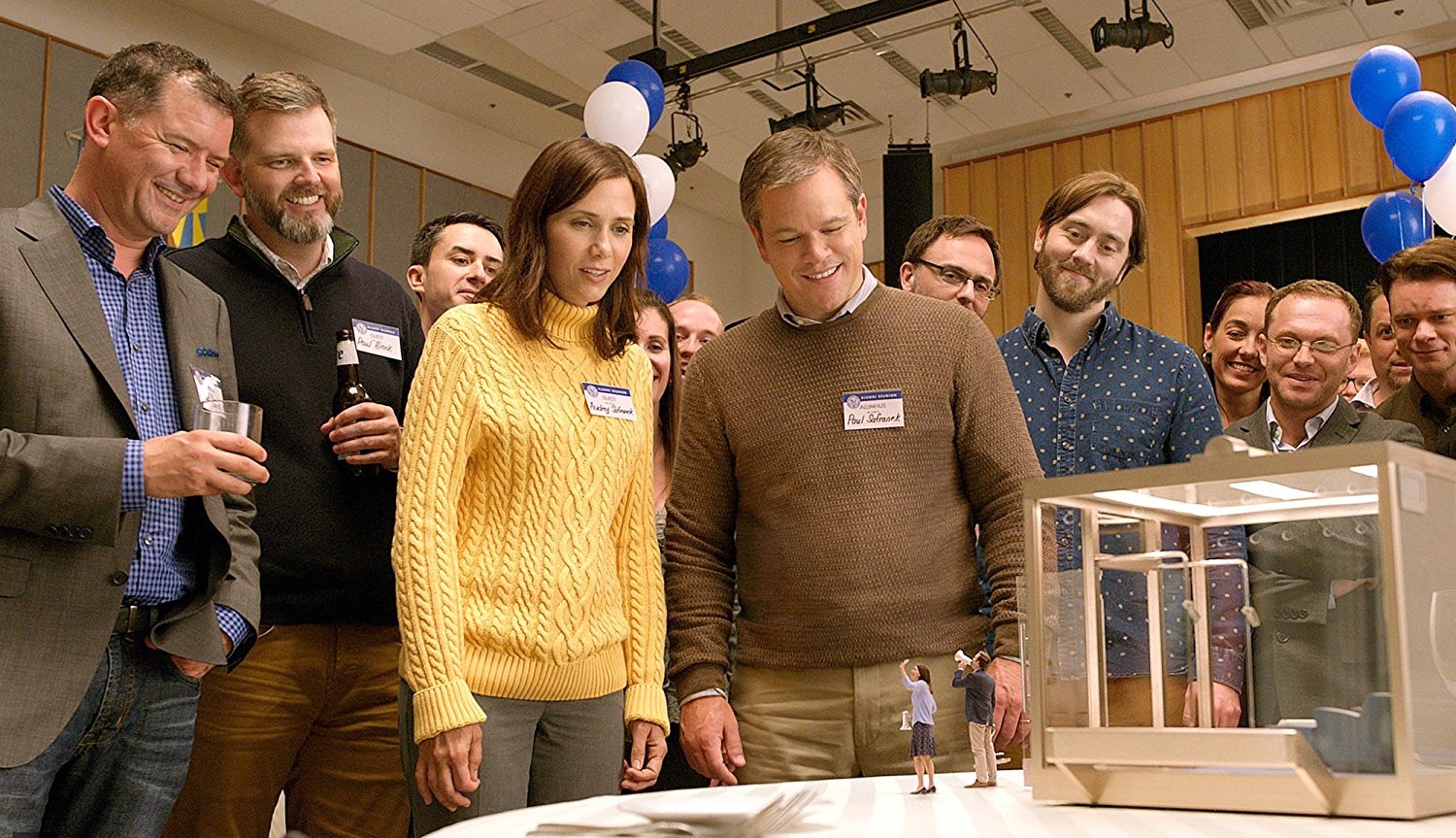
Payne co-pens the script with Jim Taylor. Jim Burke is producing alongside Payne. Unlike previous Payne features, “Downsizing” calls for special effects, which will increase the budget, This is Payne’s first work since the 2004 Oscar-winning “Sideways,” which was a Searchlight release.
Cut to eight years later, when “Downsizing” is made with a totally different cast, and six years after Payne’s winsome, “The Descendants,” starring George Clooney at his best.
Here is what I wrote upon seeing the film’s world premiere at the 2017 Venice Film Festival
August 30, 2017:
The best thing to be said about Alexander Payne’s new film, Downsizing, which serves as opening night of the 2017 Venice Film Fest, is that it’s totally unpredictable in narrative, structure and tone. That’s not necessarily a good thing.
Paramount will release this classy and prestigious film its main Oscar contenders on December 22, at the height of the awards season, though it’s doubtful that the film will feature prominently in the upcoming Oscar race.
Ironically, here is a movie about small, undersized individuals whose ambition and scope are exactly the opposite–oversized and even outsized. The film’s budget (excluding marketing and publicity) is massive: $68 million (some due to special effects), the biggest ever allotted to a movie by Payne, whose strength and specialty has been in making intimate and iconic features. Paramount will have to take a major loss on this one.
For his new, long-gestating work, Payne has taken the premise of a shrinking man, a familiar conceit usually used in Hollywood sci-fi and comedy films of yesteryear, as a starting point for delivering an existential meditation on the future of humanity.
It’s impossible to describe “Downsizing” in terms of a single genre. On one level, it boasts the visuals of a sci-fi (white on white scenes, long narrow corridors), taking place in the near future. On the other, it’s a film grounded in contemporary reality, with criticism (both subtle and unsubtle) of Capitalism and the American Way of Life.
On still another level, Downzising tries to offer a meditation on the future of the human race, reworking in semi-original way the familiar apocalypse thesis of “the end of the world” (the film’s second part).
Downsizing may represent a turning point in the evolving career of Payne, a major indie director. We get a new facet of the director, more as a thinker concerned with the geopolitics state of the real world than as a social satirist of Nebraska’s folks, as evident in most of his earlier (and better) pictures.
The lengthy film (135 minutes) is roughly divided into three parts, each marked by different ideas, tonality and visual design.
In the first, we are introduced to a lower-middle class married but childless couple from Omaha (the usual locale of Payne’s stories), who struggle in their day to day existence.
Matt Damon plays Paul Safranek (the running joke is that no one can pronounce his name properly), an ordinary “Everyman,” who is presumably happily married to Audrey (Kristen Wiig). The couple, despite their age, is childless (or childfree). But “something” is missing from Paul’s life: a sense of true meaning, a raison d’etre for his very being.
At an international conference—titled Sustainability—a Norwegian scientist, Dr. Jorgen AsbJornsen (Rolf Lassgard, the acclaimed star of A Man Called Ove), announces that his lifetime project has come to fruition: Humans can be reduced to five-inches, and as such, can live more happily in Leisureland, a special community of the small.
At a school class reunion, Paul, who’s an occupational therapist, and Audrey, meet their friends (Jason Sudeikis and Laura Dern) who have gone small and love every minute of it–or so they say
For the first hour or so, Damon’s Paul is all alone, as Audrey decides, at the very last moment, not to go through the medical process of shrinking, which is described in graphic detail.
Paul does seem very upset about Audrey’s departure, and neither are we viewers, because there is no real chemistry between the couple, and Kristen Wiig (second or third choice for the art) turns in a brief and shallow performance (which is not her fault entirely).
Unlike most Hollywood sci-fi films, the government or military have no role in the experiment at hand; it’s a private, non-coercive enterprise, based on free will, though the tale never makes a convincing case of that.
Paul’s routine existence as a telephone sales operator is disrupted by some eccentric individuals. There are two aging men (or rather boys), Dusan and Joris (Christoph Waltz and Udo Keir), who spend their time living vicariously and frivolously in parties defined by booze and drugs. Waltz and Keir are always interesting and fun to watch, but they seem to belong to another movie.
The real change in Paul’s life comes through accidental meeting with a Vietnamese refugee, Ngoc Lan (Hong Chau), a one-legged woman who had been in prison due to her previous political protests. Working as a maid at Dusan’s house, this tough, relentless femme puts pressure on Paul into helping poor immigrants–who are meant to represent the growingly diverse Third World–they reside in a huge overpopulated tenement.
Intellectually, the movie is based on the notions of culture clash—or rather clashes—and interconnectivity, forcing Paul to get out of his passive complacency and face a totally new world and different subcultures, which he has never encountered or even heard about.
Payne and his regular and collaborator, Jim Taylor, have built their vivid, colorful but essentially incoherent tale around a middle-aged man in desperate need for change and redemption—in many ways, just like the retiree protagonist of About Schmidt (played by Jack Nicholson in a bravura, Oscar-nominated turn).
In the past, Payne has been compared to Preston Sturges in his subtle mode of social satire. But I think Downsizing follows more in the footsteps of Frank Capra, updating the latter’s Depression-era message comedies to the new, blatant and crass Trump era.
Damon dominates the film in terms of screen time, but his performance lacks sharpness and charisma. Like Wiig, he may be miscast or misguided by the writing and direction. (This is a very bad year for Damon, considering that he is also in two other bad movies, including George Clooney’s flop, Suburbicon).
Of all his films, Downsizing is the most outlandish–in both the positive and negative senses of this term–and least overtly humorous or satirical. Hopefully, this mishmash of ideas, which must have felt more interesting on paper, does not reflect the director’s progressing age (he’s now 56) and new cinematic and intellectual interests.
Initial response of the international journalists in Venice Fest to the first press screening was decidedly mixed. Two days later, the film also received lukewarm reaction at the Telluride Film Fest.
Matt Damon talks about Downsizing:
emanuellevy.com/wp-admin/post.php?post=154504&action=edit
